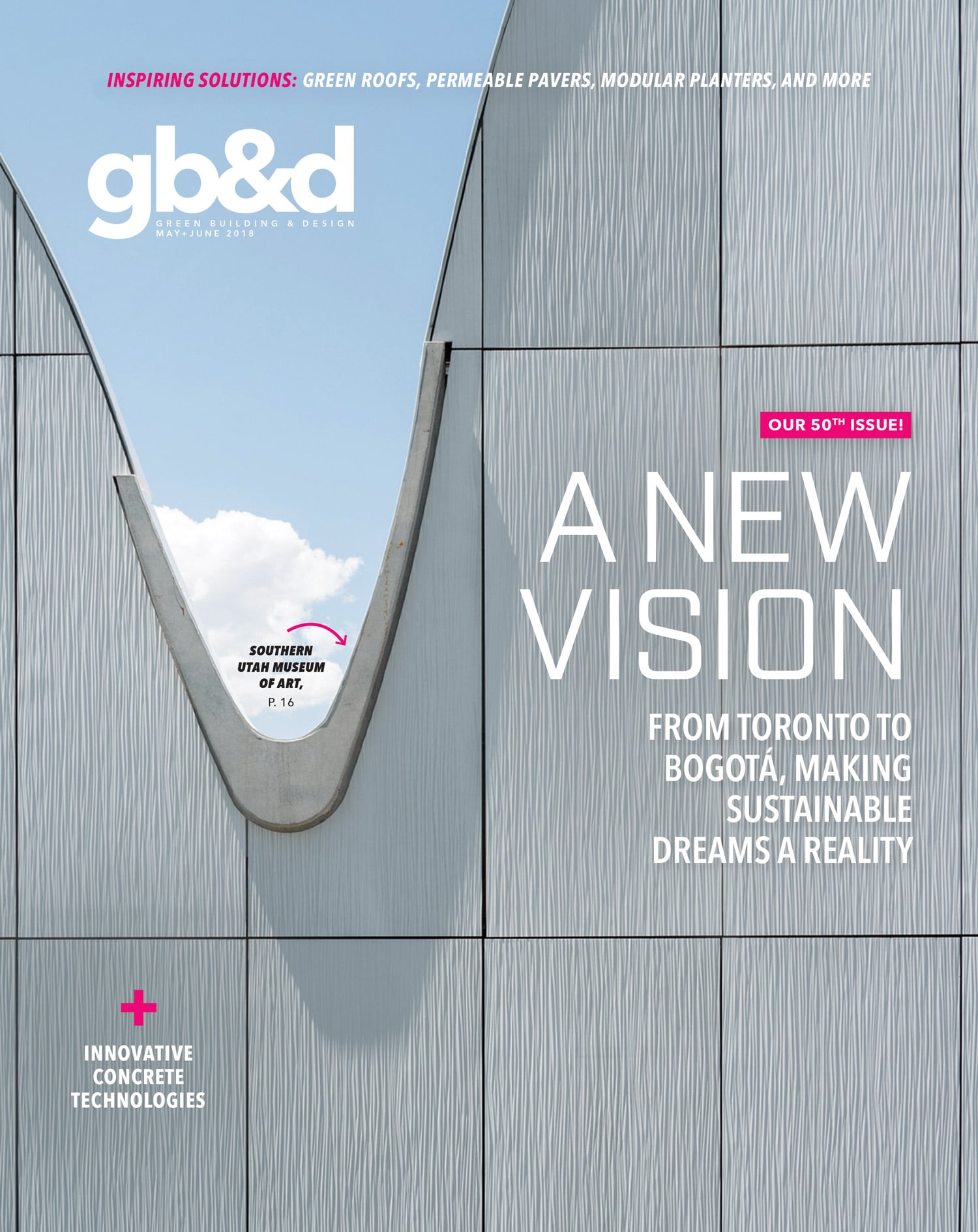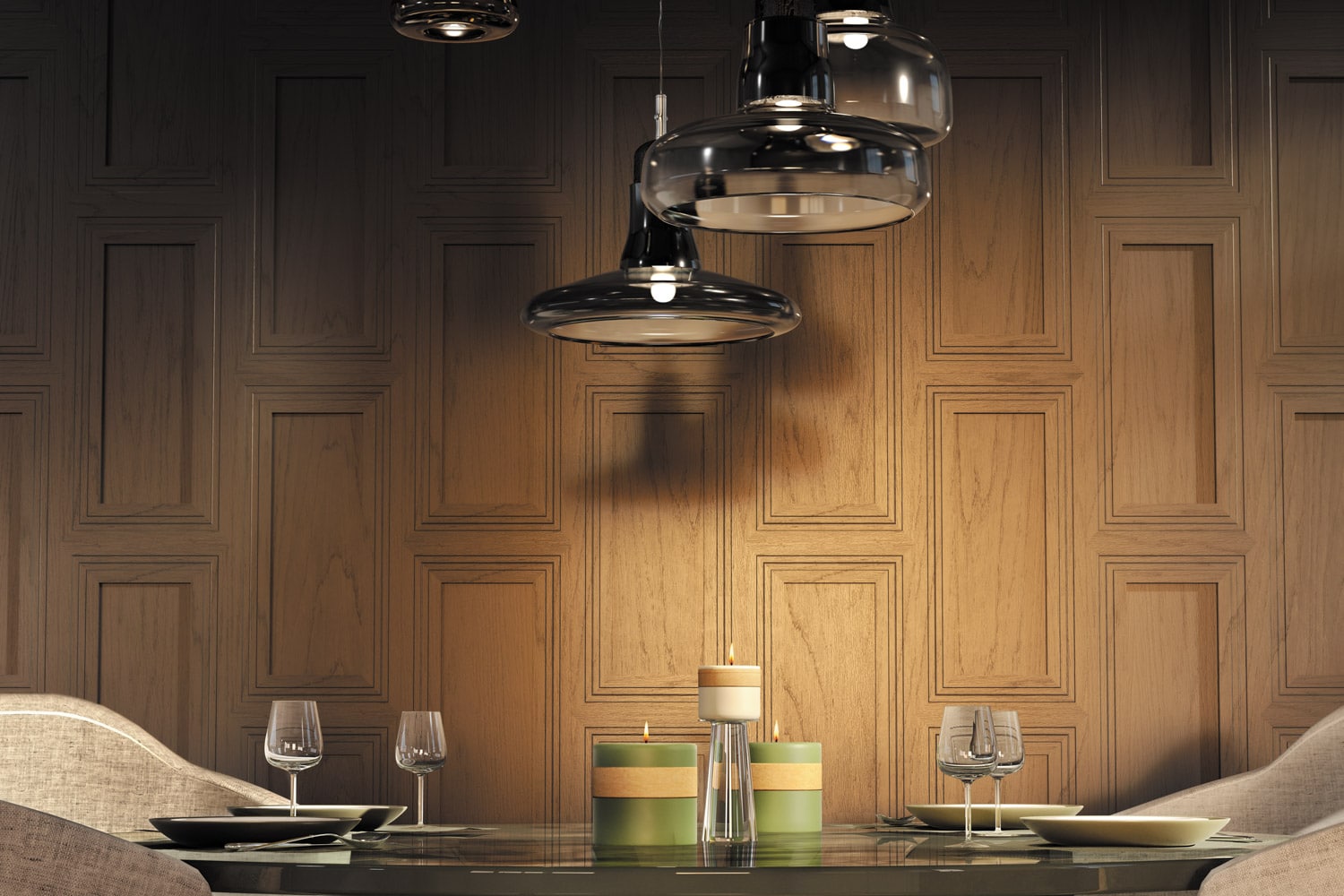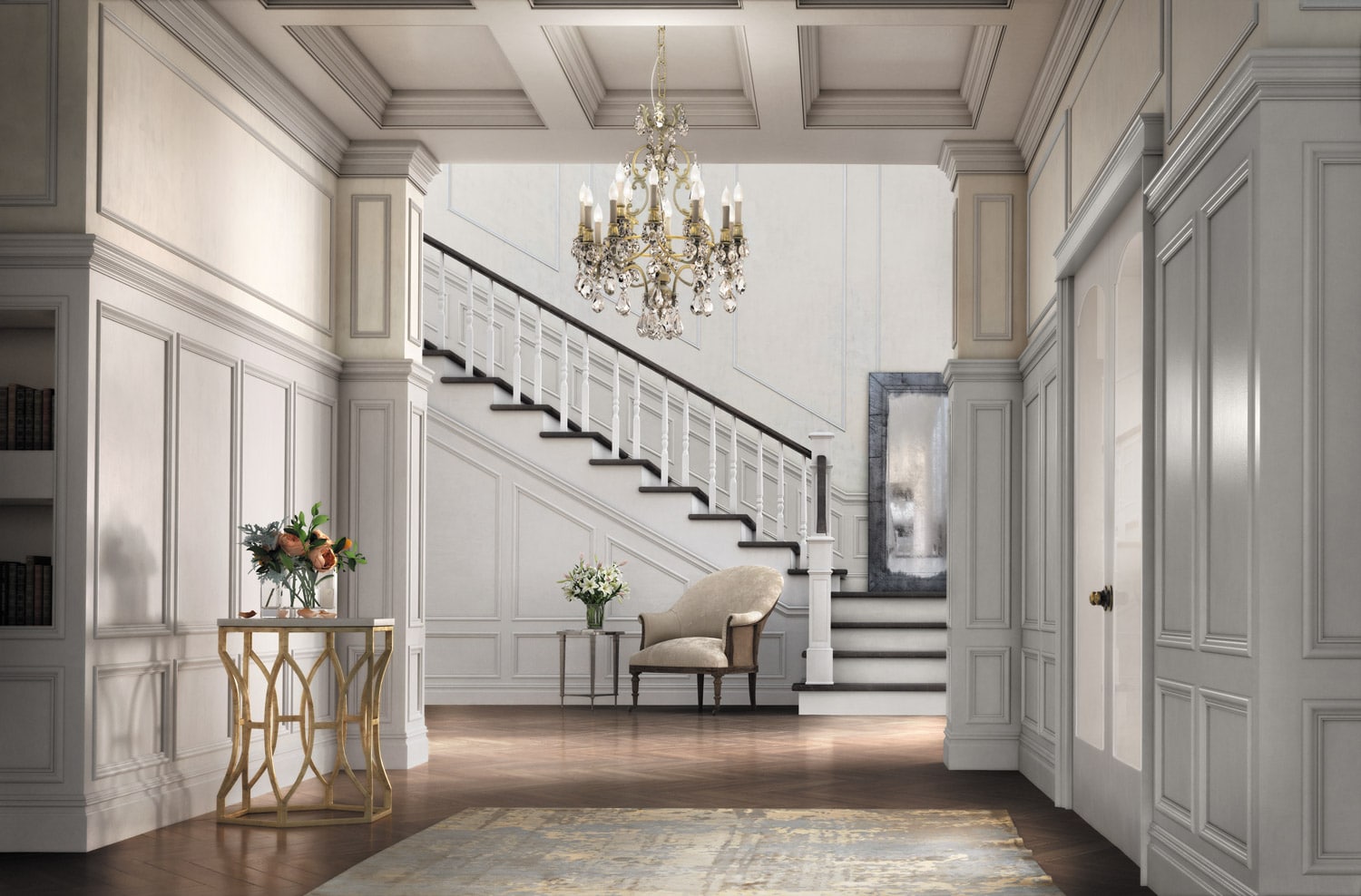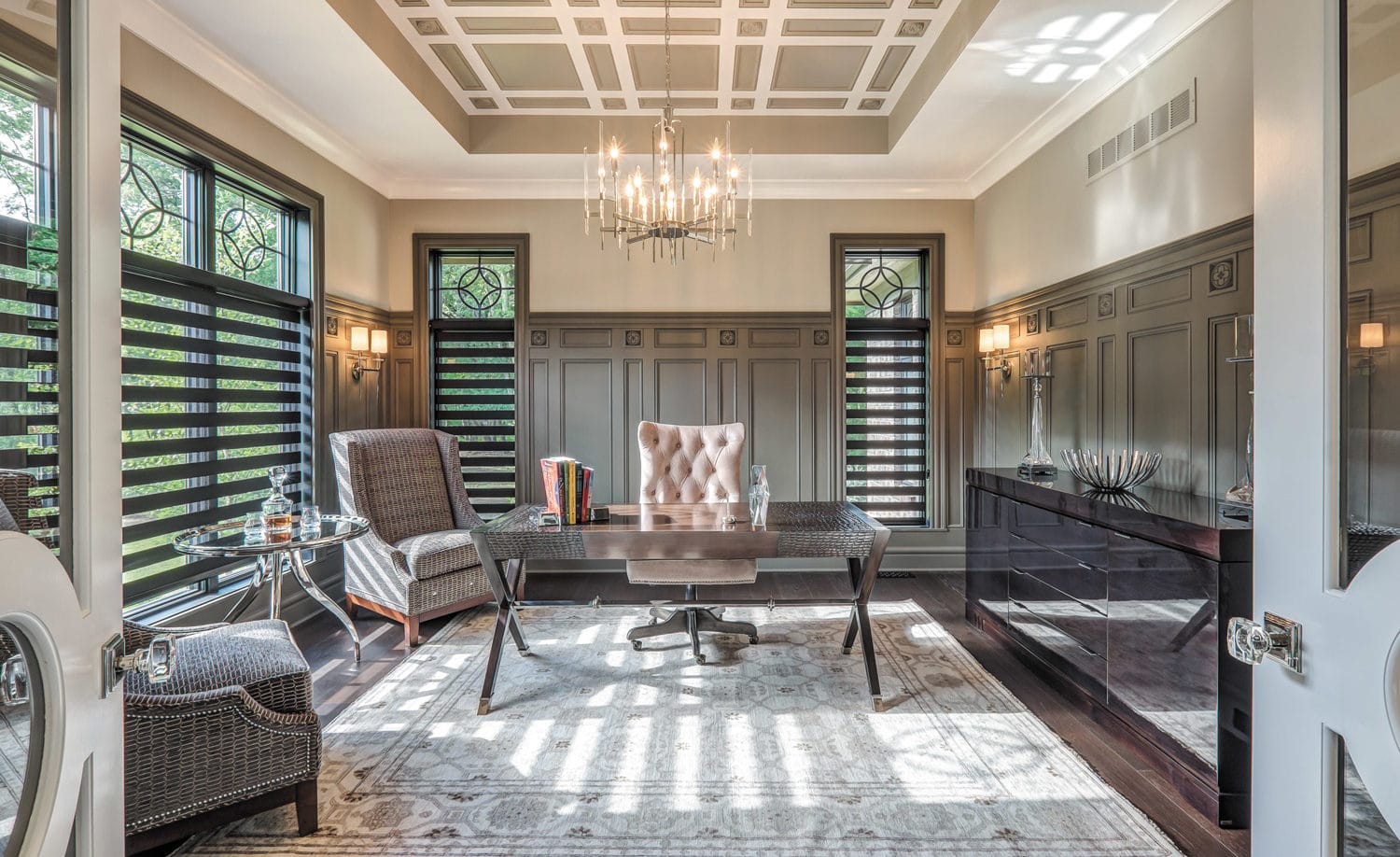
Let beautiful wall treatments stand in place of elaborate art. [Photo: Courtesy of Metrie]
Metrie’s interior finishing solutions take spaces from fine to unforgettable.
Elevating a room doesn’t have to mean breaking the bank or spending months searching for new furniture or art and knocking down walls. You can make a space feel grand or cozy—or really anything you want—in as little as a weekend with clever use of trim or crown moulding.
“We want people to think about trim as part of their decor,” says Denise Tripamer, director of marketing communications at Metrie, a family-owned business since 1926 that offers beautiful interior products and architectural elements. “When you see a great looking space, many people don’t often realize it’s the trim that makes the difference. It can really create a mood and set a tone for the space.”
Metrie, a building materials company based in Vancouver, has always been in the trim business, but even as they’ve expanded across North America, one thing has never changed—their commitment to stellar design. “Our product lines have changed and materials have changed over the years, but we’ve always stayed current with what’s going on in the market and are focused on helping people create beautiful interior spaces,” Tripamer says.
She has firsthand knowledge of how Metrie can transform a space—she incorporated elements of their Finishing Collections in her nursery. “The trim in my home was really small in size and very basic,” she says. “I had no idea at the time my home was built—I was a typical consumer. But working at Metrie and seeing professionally designed spaces all day long, I thought, ‘Wow. I can really do something here with my daughter’s room.” She redid the room’s baseboards and casing and added a wainscot of rectangular boxes below the chair rail. “Her room is now the nicest in the house. I love being in her room. It’s just a really comforting space.”
Whether you add wainscoting or layer trim, the possibilities are endless, according to Diana Elliott, Metrie’s product design and development manager. These are just a few ways you can design like a pro and make the most of any room in your home or business.
FROM OUR MAY+JUNE 2018 ISSUE

The preferred publication of leading green professionals.

[Photo: Courtesy of Metrie]
Decide what you want.
Customization is key, and Elliott says she’s seeing a lot more of it these days, including blending traditional and modern elements. “We’re providing tools for people to create their own unique spaces, to be artists,” she says.
Metrie simplifies the process, too, with offerings like their Finishing Collections—with the math built in. “We’ve done the work of figuring out the proportions in selecting your mouldings.” One of their newest lines, Option {M}, links their products to popular decor styles, so when a customer references a certain look—say modern farmhouse—Metrie can point you toward an assortment of products that includes, for instance, shiplap. “We’ve curated these options so they know that’s going to fit with the look they’re trying to achieve,” Elliott says.
Mix shapes and styles.
Moulding is not just for traditional spaces. It doesn’t matter whether you’re after the Craftsman style or something modern, Tripamer says Metrie can help. “Have fun with it and express your style,” she says. “If you have a really high ceiling, layer a couple of different profiles to create a unique crown moulding detail that will make an expansive space feel ultra-luxe. What determines whether the look is more contemporary or traditional is the amount of curves and details in the trim profile and how it’s used—not whether trim is used or not.”
Elliott says you can also use moulding with really clean lines to help create interest within a space. “That’s where we see more geometric patterns and a lot of grid-based patterns being applied to walls.”

[Photo: Courtesy of Metrie]
Consider the need for art.
Some wall treatments act as artwork itself. “It adds movement within the room,” Elliott says. “You can use it to transition into another space or draw attention to one wall, or maybe it’s part of a fireplace mantel where you’ve done a treatment above instead of placing a painting there.”
Tripamer says it doesn’t have to be difficult application. She likens it to putting simple rectangles and squares on your walls. “It adds warmth and texture to the space even before other furnishings are added in,” she says.
Don’t be afraid of color.
Incorporating moulding doesn’t mean it has to be all white. Use black trim on dark walls or try a monochromatic color palette. Elliott calls it “minimal luxury.” “It draws subtle attention without overwhelming the space.”
Tripamer agrees. “I’d encourage people to try new things, especially now that painted trim is so prevalent in the market,” she says. “It’s a great time to experiment with color and see how it changes the look of a room just by painting the trim.”

[Photo: Courtesy of Metrie]
Rethink the furniture.
Elliott is also seeing wall treatments used to help anchor beds instead of more traditional, often bulky, headboards. “A lot of times it goes back to people wanting to customize and personalize. You can’t find exactly what you’re looking for when you’re shopping so people are spending more time creating their own thing. It’s that pride of ownership and craftsmanship.”
Look up.
Some of the most inspiring projects Elliott has seen incorporate different ceiling treatments, where the ceiling is used as essentially a fifth wall. “Ceilings are a perfect example of using profiles like baseboards, casing, or panel moulds to create elaborate designs—not using the product in its traditional sense,” she says. “Ceiling treatments provide so much texture and depth, it really completes that space. It could be anything from simple design around lighting fixtures to elaborate coffered ceilings.”
You don’t have to redo everything.
Quick weekend projects incorporating details like shiplap or rustic boards to create feature walls are increasingly popular—and for good reason. “That’s a very easy project for a beginner,” Elliott says. “It’s a simple installation, requires minimal tools, and will have a big impact in
your room.”


